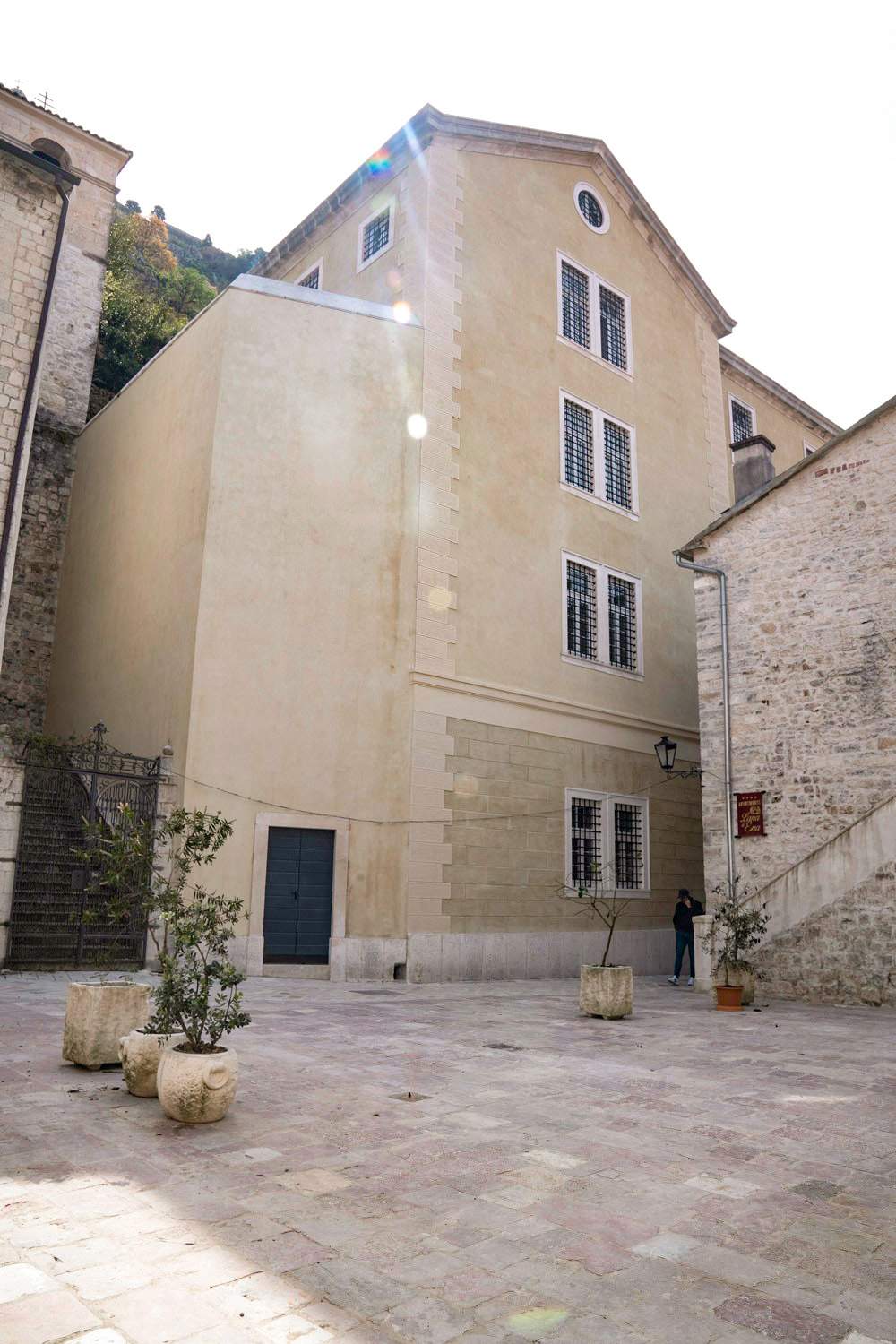Prison in Kotor
The Museum of the Prison in Kotor, also known as the “Old Prison” and “Austro-Hungarian Prison,” is located within a well-preserved prison complex dating back to the mid-19th century, built during the Austro-Hungarian rule in the region, designed by the Dalmatian architect Marko Bencon. The three-story building, painted in the characteristic yellow color by which Austrian prisons were recognized, is made of stone and brick composing thick walls, with windows protected by wrought iron grilles. On the facade, there is a plaque erected in honor of sailors who led a rebellion against the Austro-Hungarian fleet in 1918. During World War II, it served as a collection center for Italian occupiers who sent captured civilians from here to camps in Bar, Croatia, Hungary, Albania, and Italy. The prison ceased operations in the early 1990s, after 150 years. By the initiative of the Ministry of Culture of Montenegro, with the support of regional ministries of culture, the prison was repurposed into a museum and a creative and artistic center with possibilities for artist residencies.
Our expert team successfully carried out conservation and restoration work on the facade of the Museum-Prison building in Kotor. Through careful conservation and innovative solutions, the restoration was completed, and the old prison building in Kotor was repurposed, creating a safe and inspiring interior adapted for artist residencies and exhibitions intended for visitors.
Year:
2020-2021Location:
Kotor, MONTENEGROLocation:
Kotor, MONTENEGROConstruction Period:
2020-2021Client:
Ministry of Culture of Montenegro - Cetinje




